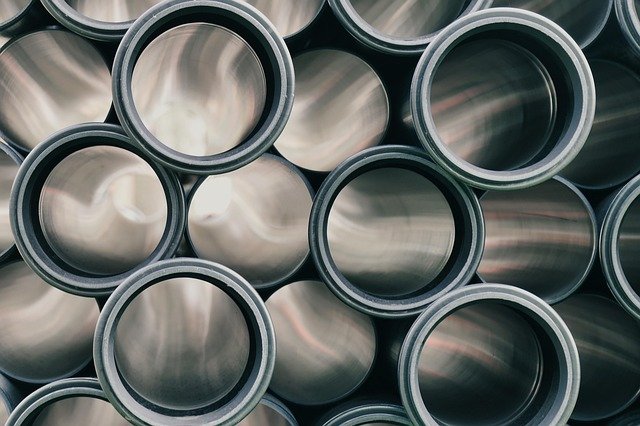Using Distributed Fiber Sensing to Track Subsurface Moisture Changes
Distributed fiber sensing offers continuous, lengthwise monitoring of buried assets by turning a single optical fiber into thousands of sensing points. This technology can reveal moisture migration patterns, detect anomalous wetting near pipelines or utilities, and support targeted excavation and validation efforts with detailed spatial data.

Distributed fiber-optic sensing enables continuous, high-resolution monitoring of underground conditions by using standard optical fiber as a distributed sensor. When environmental parameters such as moisture or temperature change around the fiber, they alter the light that travels through it; interrogator units analyze those changes to infer subsurface conditions. For moisture tracking specifically, fiber systems provide long-range coverage and repeatable measurements that help operators map wetting events, prioritize field investigations, and reduce unnecessary excavation. Integration with other signals — acoustic, thermal, and pressure data — improves situational awareness and helps distinguish moisture from other anomalies in complex subsurface environments.
How do fiber sensors detect subsurface moisture?
Fiber-optic systems detect moisture indirectly by measuring changes in temperature, strain, or scattering properties along the fiber. Some distributed acoustic sensing (DAS) setups pick up fluid movement and flow noise, while distributed temperature sensing (DTS) can show cooling or warming effects tied to water presence. Emerging approaches use coated fibers or coupled probes where moisture changes the thermal coupling or refractive index near the fiber, producing a measurable signal. By combining multiple sensing modalities, teams can infer moisture presence and movement with greater confidence than single-sensor approaches.
What signal types are used: acoustic, thermal, pressure?
Different signal types capture complementary aspects of subsurface processes. Acoustic (DAS) systems respond to vibrations and flow noise, useful for detecting active fluid movement or leak-related turbulence. Thermal (DTS) systems map temperature gradients that may result from groundwater ingress or fluid leaks. Pressure-sensitive fiber solutions and auxiliary pressure sensors provide direct or correlated indications of hydraulics in pipeline or utility corridors. Layering these signals helps reduce false positives: a thermal anomaly supported by an acoustic event and pressure deviation is more likely to indicate a true moisture incident than any single signature alone.
How does mapping and calibration work?
Accurate subsurface mapping requires spatially referenced fiber data and site-specific calibration. Mapping begins with georeferencing the fiber route and creating a baseline measurement under known dry conditions. Calibration involves comparing fiber responses with ground-truth points such as boreholes, moisture probes, or controlled wetting tests to establish signal-to-moisture relationships. Regular recalibration compensates for seasonal shifts in soil temperature and moisture, and signal-processing routines convert raw scattering or phase changes into actionable maps of relative moisture. Proper calibration enables more reliable trend analysis and aids long-term validation of detected anomalies.
How are anomalies triaged and validated?
Anomaly triage relies on signal characteristics, persistence, and correlation across modalities. Short transient acoustic spikes without thermal or pressure corroboration may indicate non-hydrologic noise, while persistent thermal shifts or strain patterns suggest genuine moisture migration. Validation typically uses portable sensors, shallow probes, or targeted excavation to confirm conditions. A staged triage pathway—remote monitoring, field inspection, localized instrumentation, then excavation—reduces unnecessary digs and focuses crews on the most probable causes. Documented validation steps also support regulatory reporting and asset management records.
How is pipeline monitoring and excavation planning supported?
For pipelines and buried utilities, distributed sensing yields continuous condition profiles along the entire asset length. Moisture anomalies near joints, valves, or right-of-way crossings can be highlighted for prioritized inspection. Mapping outputs inform excavation planning by indicating approximate anomaly locations and likely extent, which narrows dig footprints and reduces surface disruption. When combined with ancillary data—asset maps, soil type, and historical incident records—fiber sensing contributes to risk-based maintenance schedules and targeted repairs, improving operational efficiency while lowering safety and environmental risks.
Practical considerations: deployment, maintenance, validation
Deployment choices affect detection performance: fiber placement depth, proximity to assets, and whether fiber is bonded or loosely installed all influence sensitivity. Environmental factors such as soil thermal conductivity, seasonal moisture cycles, and vegetation cover affect signal interpretation and necessitate site-specific calibration. Maintenance includes periodic interrogator checks, firmware updates, and re-baselining after major environmental changes or construction. Validation remains essential: integrating portable moisture probes, pressure tests, or controlled wetting helps convert sensor signals into validated asset condition assessments and supports evidence-based decision-making.
Conclusion Distributed fiber sensing provides a scalable way to monitor subsurface moisture dynamics with high spatial resolution and continuous temporal coverage. By combining acoustic, thermal, and pressure-related signals and applying careful mapping and calibration, operators can detect and triage anomalies more effectively, plan focused excavations, and validate findings with targeted field methods. With appropriate deployment and ongoing validation, fiber sensing strengthens subsurface moisture monitoring and supports more informed asset management decisions.






